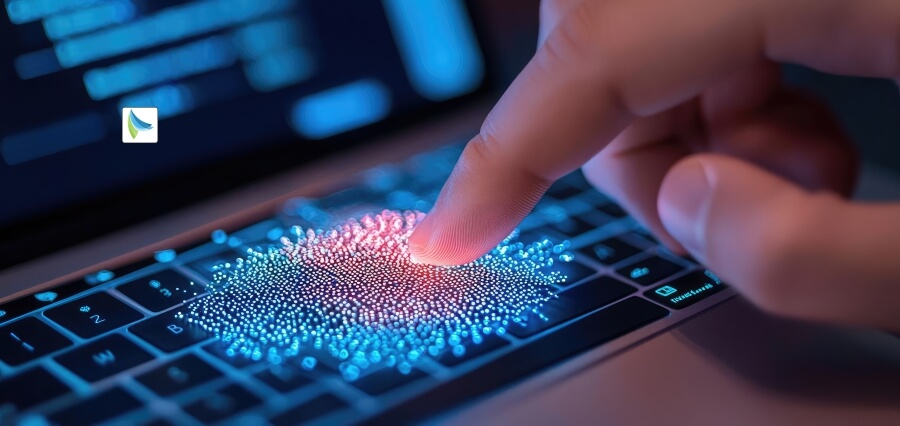In a constantly changing digital landscape, where massive networks need to be managed, remote workers need to be accounted for, and infinite digital assets need to be protected, corporate focus has been on identity security. Legacy cybersecurity constructs are prone to be slow in catching up with the level of sophistication that present-day cyber-attacks can provide.
Where AI-fortified identity protection has really made the difference is that it has allowed one to step into a whole new paradigm of proactive, smart security.
Why Do Identity Protection Requires a Smarter Solution?
Business today isn’t just protecting databases or networks protecting human beings. Employees, partners, and customers all talk to one another on various platforms, and each of them is an open door. Most cyberattacks today are credential-stolen based, insider-based, or social engineering-based attacks that can bypass traditional security.
Static, rule-based identity protection technology is not for this moment. It is too rigid to respond to dynamic conduct or contextual attacks. AI-driven identity protection provides a smarter, more adaptable solution gauging behavior patterns, detecting anomalies in real time, and taking action with precision before the damage is done.
AI-enabled identity protection leverages machine learning, behavioral patterns, and context intelligence to understand typical user behavior. It learns continuously. For instance, if an employee normally logs in from New York within 9 a.m. and 5 p.m. but unexpectedly logs in from elsewhere in the world at midnight, it can recognize that as an anomaly and initiate extra authentication steps or reject access.
In contrast to fixed-rule traditional systems, AI does not exclusively rely on hardcoded parameters. Instead, it learns along with the environment. That is, it becomes more accurate over time excluding more false positives and even malicious activity outright with greater efficiency.
Steps to Implement AI-Powered Identity Protection
Implementing AI in an enterprise security system requires strategic planning, teamwork coordination, and proper understanding of present vulnerabilities.
First, assess your organization’s existing identity and access management (IAM) infrastructure. Most organizations still rely very much on password systems, minimal multi-factor authentication, and ancient monitoring software. A general audit determines where AI will have the greatest impact.
Second, organizations need to clarify their risk profiles. All users are not the same type of risk. Managers at the executive level, finance personnel, and IT personnel work with sensitive data and systems and are consequently usually the first point of entry for hackers. Identity protection through artificial intelligence allows companies to have dynamic, context-aware access policies. What it implies is that access decisions are not only credential-based but also location-based, time-based, device-based, and past behavior-based on the user.
Choosing the right AI platforms and tools is critical. There are some who adopt a combined approach where identity protection is part of other cybersecurity features, while others use the modular design that can be integrated with their IAM platforms. No matter your route, integration with your cloud environments, internal directories, and monitoring solutions is required.
Deplying has to be followed by careful monitoring. At first, AI systems give false positives. But having gathered experience based on real-world data, they can identify true anomalies and threats with increasing accuracy. IT personnel have to be actively involved in training time adjusting parameters, second-guessing flagged activity, and helping the system hone its skills.
Solving Common Challenges
The potential of AI to safeguard identity is vast but the path to enforcement is not without obstacles. Data privacy is one of the chief issues. A system of this nature requires access to huge volumes of user information to function effectively—increasing headaches of compliance, especially under such legislations as GDPR and HIPAA.
Transparency is the way forward. Information on what data is being collected, why it is being processed, and how it will be protected must be made available to everyone and to internal stakeholders. Good systems of good governance and good communication accomplish a great deal to create trust and allow AI to be used ethically.
Change management is also a problem. There must be an attitude adjustment to implement AI-based systems. Staff may be used to extra authentication procedures or activity tracking. Training and ongoing interaction are needed in order to help accommodate users and avoid too much friction.
Real-World Impact
The firms that have implemented AI-based identity protection are already seeing benefits. Such technologies reduce the time between detection and response by an enormous amount. While traditional systems will take hours or days to detect a compromised account, AI will detect one within minutes—sometimes even before the attack has begun.
Beyond security, user experience benefits as well. Instead of making all users jump through hoops every time they log in, the system adjusts authentication risk by risk. Fully trusted users float through, with suspicious behavior challenged in real-time.
In finance, healthcare, and critical infrastructure—a vertical subset where identity-based breaches can lead to catastrophes—AI-powered protection is quickly becoming a requirement and not an amenity.
Looking to the Future
As artificial intelligence continues to evolve, so too will its role in cybersecurity. We’re beginning to see AI integrated with biometric verification, zero-trust architectures, and blockchain-based identity frameworks. These developments signal a shift toward more decentralized and intelligent identity ecosystems.
The future of security is prevention and prediction, not detection. Artificial intelligence-powered identity protection is the building block of that future—providing business with the agility and insight they require to remain ahead of constantly evolving threats.
Conclusion
Digital identities are the keys to enterprise data, systems, and operations. They must be secured with more than passwords and firewalls—it requires intelligence, velocity, and flexibility.
Through the help of AI-driven identity protection, companies can reduce risk, optimize business efficiency, and create a safer and more intelligent digital world. With each click, login, and access request so vital to the world today, smart identity protection is not merely an astute investment it’s a strategic necessity.
Read More : Building Consumer Trust Through Ethical Digital Privacy Practices












